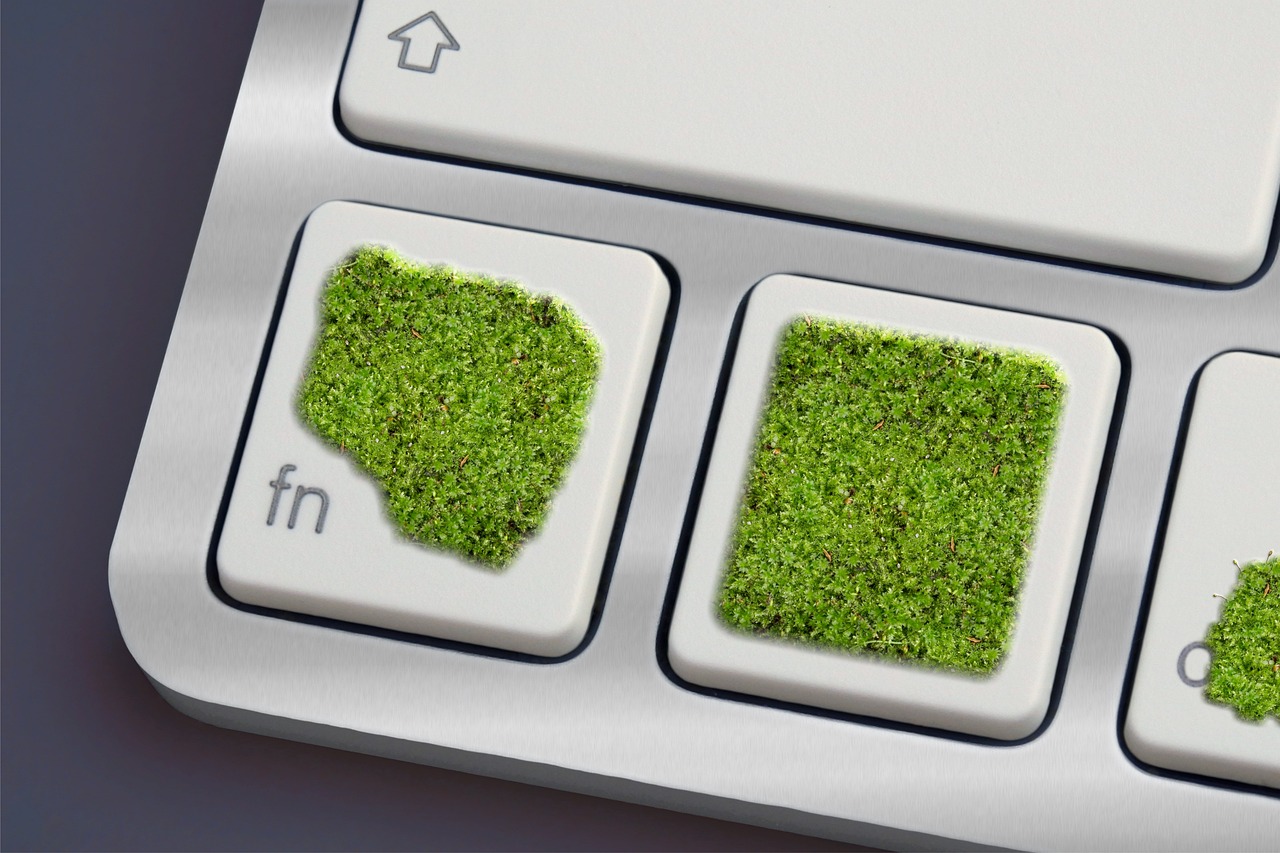In recent years, the IT industry has undergone a significant transformation, with sustainable practices and green technology taking center stage. As global awareness of environmental issues grows, companies are increasingly adopting eco-friendly approaches to reduce their carbon footprint and promote sustainability. This shift is not just a trend but a necessity, as the IT sector’s energy consumption and e-waste production continue to rise.
The integration of green technology in IT operations is reshaping the industry landscape, from data centers to software development. Companies are recognizing that sustainable practices not only benefit the environment but also lead to cost savings and improved efficiency. This article explores the various aspects of sustainable IT practices and how they are shaping the future of technology.
The Role of Green Technology in IT
Energy-Efficient Data Centers
One of the most significant areas where green technology is making an impact is in the development of energy-efficient data centers. Traditional data centers are notorious for their high energy consumption and carbon emissions. However, green data centers are changing this narrative by implementing innovative cooling systems, optimizing server utilization, and using renewable energy sources.
| Aspect | Traditional Data Centers | Green Data Centers |
|---|---|---|
| Energy Consumption | High | Significantly lower |
| Cooling Methods | Conventional air conditioning | Advanced cooling techniques (e.g., liquid cooling, free air cooling) |
| Power Usage Effectiveness (PUE) | 2.0 or higher | 1.2 or lower |
| Carbon Emissions | High | Reduced by up to 80% |
| Renewable Energy Use | Limited or none | Extensive use of solar, wind, or hydroelectric power |
Renewable Energy Adoption
The shift toward using renewable energy sources in IT operations is gaining momentum. Many tech companies are investing in solar and wind power to reduce their reliance on fossil fuels and decrease their carbon footprint.
Benefits of renewable energy for IT companies:
- Reduced operational costs in the long term
- Enhanced brand reputation and customer loyalty
- Compliance with environmental regulations
- Hedging against future energy price volatility
- Contribution to corporate social responsibility goals
- Potential for energy independence and reliability
Sustainable IT Hardware and Devices

Eco-Friendly Hardware
The development of eco-friendly IT hardware is a crucial aspect of sustainable IT practices. Manufacturers are focusing on creating energy-saving computers, servers, and peripherals that consume less power and use environmentally friendly materials.
Companies leading the way in producing sustainable IT hardware:
- Dell Technologies: Committed to making 100% of their packaging recyclable by 2030
- HP Inc.: Uses recycled ocean-bound plastics in their products
- Lenovo: Implements a closed-loop post-consumer recycled content (PCR) process
- Apple: Aims for carbon neutrality across its entire business by 2030
- Fairphone: Produces modular smartphones designed for easy repair and upgrade
E-Waste Reduction Initiatives
Reducing e-waste is a critical challenge in the IT industry. Companies are implementing recycling programs, refurbishment initiatives, and proper disposal methods to address this issue.
| E-Waste Management Strategy | Description | Impact |
|---|---|---|
| Recycling Programs | Collect and process used electronics | Reduces landfill waste and recovers valuable materials |
| Refurbishment | Repair and resell used devices | Extends product lifespan and reduces new device production |
| Proper Disposal | Safe destruction of non-recyclable components | Prevents harmful materials from entering the environment |
| Design for Disassembly | Create products that are easy to take apart | Facilitates easier recycling and repair |
| Take-Back Programs | Manufacturers collect old devices from customers | Ensures proper recycling and disposal |
Software Solutions for Sustainability
Green Software Development
Green software development is an emerging field that focuses on designing applications with energy efficiency in mind. Developers are adopting practices that reduce the computational resources required to run software, thereby decreasing energy consumption.
Best practices for green software development:
- Optimize code for efficiency
- Implement energy-aware algorithms
- Utilize cloud computing for scalability
- Design for low-power modes
- Minimize data transfer and storage
- Use efficient programming languages
- Implement caching strategies
- Conduct regular energy profiling and optimization
AI and IoT for Energy Management
Artificial Intelligence (AI) and the Internet of Things (IoT) are playing crucial roles in optimizing energy consumption in IT operations. These technologies enable real-time monitoring and intelligent decision-making to reduce energy waste.
AI-driven energy management tools:
- Smart building management systems
- Predictive maintenance for IT infrastructure
- Automated workload balancing in data centers
- Energy consumption forecasting
- Intelligent HVAC control systems
- Dynamic power management for servers and devices
The Future of Sustainable IT Practices

Circular Economy in IT
The IT sector is gradually shifting toward a circular economy model, which focuses on the reuse and recycling of materials. This approach aims to minimize waste and maximize resource efficiency throughout the product lifecycle.
| Principle | Description | IT Application |
|---|---|---|
| Design out waste and pollution | Create products with minimal environmental impact | Modular device design for easy repair and upgrade |
| Keep products and materials in use | Extend the lifespan of products and components | Refurbishment programs for IT equipment |
| Regenerate natural systems | Support the restoration of ecosystems | Use of biodegradable materials in IT products |
The Impact of Regulations and Standards
Government regulations and industry standards play a crucial role in promoting sustainable IT practices. These guidelines help set benchmarks for energy efficiency, waste reduction, and environmental responsibility.
Key regulations and standards affecting the IT industry:
- Electronic Product Environmental Assessment Tool (EPEAT)
- Energy Star certification
- Restriction of Hazardous Substances (RoHS) Directive
- Waste Electrical and Electronic Equipment (WEEE) Directive
- ISO 14001 Environmental Management Standard
- EU Ecodesign Directive
Case Studies: Companies Leading the Green IT Movement
Tech Giants Adopting Green Practices
Major tech companies are setting the pace for sustainability in the IT industry, implementing ambitious green initiatives and investing in renewable energy.
| Company | Key Green Initiatives |
|---|---|
| Carbon neutral since 2007; aims for 24/7 carbon-free energy by 2030 | |
| Microsoft | Committed to being carbon negative by 2030 |
| Apple | 100% renewable energy for all corporate operations; carbon neutral goal for entire supply chain by 2030 |
| Amazon | Pledged to reach net-zero carbon emissions by 2040 |
| Achieved net-zero emissions for global operations in 2020; committed to net-zero value chain by 2030 |
Startups and Innovators
Smaller companies and startups are also making significant contributions to sustainable IT practices through innovative solutions.
Examples of innovative green tech solutions from startups:
- Climeworks: Direct air capture technology to remove CO2 from the atmosphere
- Nowi: Energy harvesting chips for IoT devices, reducing battery waste
- Recycle Technologies: Advanced plastic recycling for e-waste
- CloudNC: AI-powered manufacturing to reduce material waste
- Ecoinno: Biodegradable packaging materials for electronics
Conclusion
The adoption of sustainable IT practices and green technology is not just a passing trend but a fundamental shift in how the industry operates. As we’ve explored, from energy-efficient data centers to circular economy principles, the IT sector is embracing sustainability at every level.
The benefits of these practices extend beyond environmental protection. Companies that invest in green technology often see improved efficiency, cost savings, and enhanced brand reputation. Moreover, as regulations tighten and consumer awareness grows, sustainable practices will become a competitive necessity rather than just a corporate responsibility.
As we look to the future, it’s clear that green technology will continue to shape the IT industry. Businesses that prioritize sustainability and invest in eco-friendly solutions will be better positioned to thrive in an increasingly environmentally conscious world. By embracing these changes, the IT industry can lead the way in creating a more sustainable and technologically advanced future for all.
